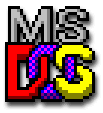
The first independent version of Microsoft Windows, version 1.0, released on November 20, 1985, lacked a degree of functionality and achieved little popularity. It was originally going to be called Interface Manager, but Rowland Hanson, the head of marketing at Microsoft, convinced the company that the name Windows would be more appealing to consumers. Windows 1.0 was not a complete operating system, but rather extended MS-DOS, and shared the latter's inherent flaws and problems.
Furthermore, legal challenges by Apple limited its functionality. For example, windows can only appear "tiled" on the screen; that is, they cannot overlap or overlie one another. Also, there is no trash can (place to store files prior to deletion), since Apple believed they owned the rights to that paradigm. Microsoft later removed both of these limitations by signing a licensing agreement.
Microsoft Windows version 2 came out on December 9, 1987, and proved slightly more popular than its predecessor. Much of the popularity for Windows 2.0 came by way of its inclusion as a "run-time version" with Microsoft's new graphical applications, Excel and Word for Windows. They can be run from MS-DOS, executing Windows for the duration of their activity, and closing down Windows upon exit.
Microsoft Windows received a major boost around this time when Aldus PageMaker appeared in a Windows version, having previously run only on Macintosh. Some computer historians date this, the first appearance of a significant and non-Microsoft application for Windows, as the beginning of the success of Windows.
Versions 2.0x uses the real-mode memory model, which confines it to a maximum of 1 megabyte of memory. In such a configuration, it can run under another multitasker like DESQview, which use the 286 Protected Mode.
Later, two new versions were released: Windows/286 2.1 and Windows/386 2.1. Like previous versions of Windows, Windows/286 2.1 uses the real-mode memory model, but was the first version to support the HMA. Windows/386 2.1 has a protected mode kernel with LIM-standard EMS emulation, the predecessor to XMS which would finally change the topology of IBM PC computing. All Windows and DOS-based applications at the time were real mode, running over the protected mode kernel by using the virtual 8086 mode, which was new with the 80386 processor.
Version 2.03, and later 3.0, faced challenges from Apple over its overlapping windows and other features Apple charged mimicked the "look and feel" of its operating system and "embodie[d] and generate[d] a copy of the Macintosh" in its OS. Judge William Schwarzer dropped all but 10 of the 189 charges that Apple had sued Microsoft with on January 5, 1989.
No comments:
Post a Comment